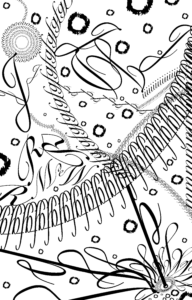Paris Is Burning Reflection
Everything is a social construct, whether it is our gender, our jobs, or our entire identities. In Paris Is Burning, we see a conglomeration of people who express themselves in any way, shape, or form in “balls” held in venues around New York City. When the participants enter the venue space, who they are in the outside world disappears, and they are free to be whoever they want to be. Judged in different categories, despite being given a rating, everyone is a winner and no one is critical or disapproving in the space.
In society, we are led to believe that we have to conform to male or female, certain jobs that we hold, and certain expectations and/or restrictions that come with our race and education. However, the people in the documentary decide to use fashion as a way to break past those barriers, truly expressing the fluidity of human identity and what it means to be ourselves. They found a community bound together by their queer identities and acceptance, and reinvented themselves even if it’s only for a few hours.
Overall, the main takeaway is that fashion is not always in the eyes of the beholder – it is also in the hands of whomever chooses to wear different pieces of clothing, different styles, and different materials. While stereotypes and judgements are still prevalent in the modern-day world, they should empower us rather than make us feel lesser than we are.
Mask Assignment
For this week’s assignment, we were instructed to create a mask/headpiece that expressed a part of our identity that cannot be expressed in our everyday fashion. I worked with Rainee Yang.
Concept: Ecofeminism
Ecofeminism examines the connection between nature and females, and explores the concept of domination by the patriarchy in our society. It focuses on the destruction and abuse of nature and their consequences as caused by capitalism and a male-dominated world. This branch of feminism draws attention to the recognition and acceptance of interdependence of humans and the natural world, as well as acknowledging nature as something that nourishes us.
Construction
While we originally wanted to use real flowers, they would have died too quickly so we decided to use fake flowers that had wire stems, allowing for more flexibility. By creating the headpiece in a way that wraps around the wearer, it represents not just the restraint felt by proponents of ecofeminism, but also the integration of our bodies with nature. The stems are made to look almost as if they are growing out of the wearer, with orchids representative of female organs and the gingko leaves representative of lungs, breathing, and thus, freedom.





